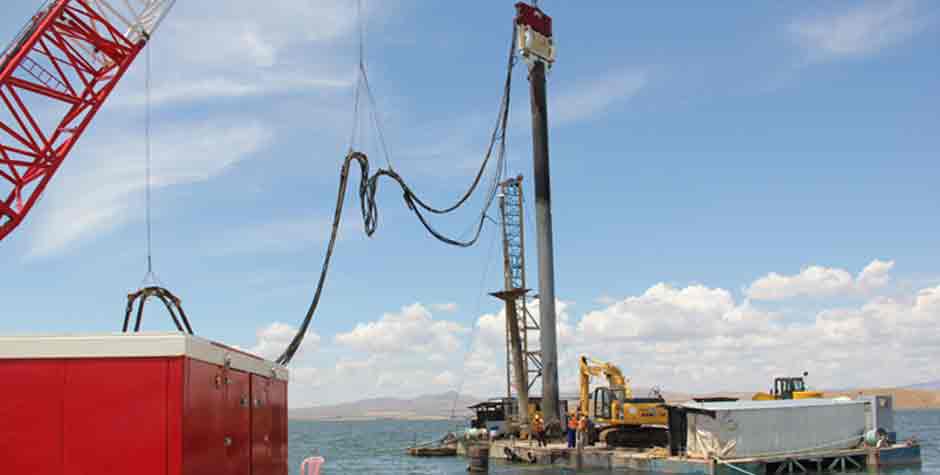In the world of deep foundation construction, a crane mounted vibratory hammer is one of the most powerful and effective tools available for pile installation. Used to drive or extract steel sheet piles, H-beams, and pipe piles, this equipment is essential for large-scale infrastructure, marine, and bridge projects.
However, not all crane mounted vibratory hammers are created equal. Choosing the right model can significantly impact your project’s efficiency, cost, safety, and final results. With numerous manufacturers and specifications available, understanding the core features and capabilities of these machines is critical for any contractor or engineer looking to make a smart investment.
This article will guide you through the key factors to consider when selecting the best crane mounted vibratory hammer for your project.
What Is a Crane Mounted Vibratory Hammer?
A crane mounted vibratory hammer is a pile driving attachment suspended from a crane or leader system. It uses high-frequency vertical vibrations to reduce soil resistance around the pile, allowing it to be driven into or extracted from the ground efficiently. These hammers are favored in situations where heavy-duty power is required and where site constraints prevent the use of smaller, excavator-mounted equipment.
Unlike impact hammers, vibratory hammers cause less noise and ground vibration, making them more suitable for urban or environmentally sensitive areas.
Key Factors to Consider When Choosing a Crane Mounted Vibratory Hammer
1. Soil Conditions and Project Requirements
The first and most important consideration is the type of soil and the specifics of your project:
-
Cohesive soils like clay or silt may require hammers with higher amplitude but lower frequency.
-
Granular soils such as sand or gravel typically respond better to high-frequency vibrations.
-
Obstructions or hard layers in the ground may demand a hammer with a high driving force and torque.
Ensure the hammer you choose can handle the expected soil resistance and is compatible with the pile type and length you’re working with.
2. Vibration Frequency and Amplitude
Modern vibratory hammers come with various frequency ranges, typically between 1,200 and 2,500 vibrations per minute (vpm). The right frequency and amplitude combination ensures effective pile penetration and minimal damage.
-
High-frequency hammers reduce the risk of vibration-related damage to nearby structures and are more suitable for urban settings.
-
Low-frequency, high-amplitude hammers are better for tougher soils and deeper piles.
Look for a model that allows adjustable frequency control, enabling your crew to adapt in real time as soil conditions vary.
3. Excitation Force and Centrifugal Force
The centrifugal force generated by the rotating eccentric weights in the hammer is a key performance metric. This force determines how effectively the vibration is transmitted to the pile.
Generally, a higher centrifugal force results in:
-
Faster pile driving or extraction
-
Better performance in difficult ground conditions
-
Greater ability to handle longer or larger piles
Be sure to match the centrifugal force rating of the hammer to the depth and diameter of the piles being used.
4. Crane Compatibility and Load Capacity
The total weight of the vibratory hammer, along with any clamping systems and accessories, must be compatible with the lifting capacity of your crane. Consider:
-
Maximum load limits at various boom extensions
-
Counterweight balance and stability
-
Hook height and working radius
Improper matching between the crane and hammer can lead to inefficiency or safety risks, especially when handling long or heavy piles.
5. Clamp Type and Flexibility
Different pile types (sheet, pipe, H-beam) require specific clamps or jaws. Some vibratory hammers come with universal clamps, while others are tailored to certain profiles.
When evaluating clamp options, consider:
-
Interchangeability for future projects
-
Hydraulic or manual clamping mechanisms
-
Safety features like automatic locking systems
For projects involving mixed pile types, investing in a hammer with modular or quick-change clamp systems can offer long-term value.
6. Noise and Vibration Restrictions
Construction near residential zones, schools, hospitals, or environmentally sensitive areas often comes with strict noise and vibration regulations. Many cities now enforce vibration monitoring and decibel thresholds on job sites.
To ensure compliance, look for:
-
High-frequency, low-amplitude models
-
Machines with built-in vibration dampening features
-
Hammers with optional sound enclosures or muffling systems
Reducing the environmental impact of your operations can also be a selling point for clients focused on sustainability.
7. Ease of Maintenance and Support Availability
Like any piece of heavy machinery, a crane mounted vibratory hammer will require regular maintenance. Choose a model with:
-
Accessible grease points and service hatches
-
Readily available replacement parts
-
Digital diagnostics or remote monitoring features
-
Local dealer or manufacturer support
Having reliable after-sales service and training support can reduce downtime and protect your investment.
8. Brand Reputation and Proven Performance
Before making a final decision, research the manufacturer’s track record in the industry. Ask questions such as:
-
How long has the model been in service?
-
Are there case studies or testimonials from similar projects?
-
Does the manufacturer provide technical training or customization?
-
What’s the typical lifecycle and resale value of the equipment?
Reliable brands with strong service networks will likely offer better long-term ROI, even if the initial cost is slightly higher.
Final Thoughts: Making the Right Investment
A crane mounted vibratory hammer is a significant investment, and the right choice can lead to faster installations, fewer project delays, and improved safety on the jobsite. By carefully evaluating your project requirements, site conditions, and equipment compatibility, you can select a model that delivers consistent performance and long-term reliability.
- Choosing the Best Crane Mounted Vibratory Hammer: Key Factors to Consider
- Different pile types (sheet, pipe, H-beam) require specific clamps or jaws. Some vibratory hammers come with universal clamps, while others are tailored to certain profiles.
- vibratory hammer for excavator
Related posts:
 15 Places to Visit in Ayodhya 2025 Near Ram Mandir
15 Places to Visit in Ayodhya 2025 Near Ram Mandir
 Ultimate Desert Safari Dubai Guide: Best Tours, Prices & Tips
Ultimate Desert Safari Dubai Guide: Best Tours, Prices & Tips
 Global Luxury Concierge Market to Reach USD 1,482 Million by 2034
Global Luxury Concierge Market to Reach USD 1,482 Million by 2034
 Puerto Escondido Flights: Your Complete Guide to Reaching Mexico’s Surf Paradise
Puerto Escondido Flights: Your Complete Guide to Reaching Mexico’s Surf Paradise
 A Comprehensive Guide to Applying for a British Passport online
A Comprehensive Guide to Applying for a British Passport online
 Discover New York City with an Affordable Hop On Hop Off Bus Tour
Discover New York City with an Affordable Hop On Hop Off Bus Tour
 Top 10 Best Adventure Activities You have to take in Andaman Islands
Top 10 Best Adventure Activities You have to take in Andaman Islands
 Best Breakfast Places in Abu Dhabi in 2025 – Secret Abu Dhabi
Best Breakfast Places in Abu Dhabi in 2025 – Secret Abu Dhabi








